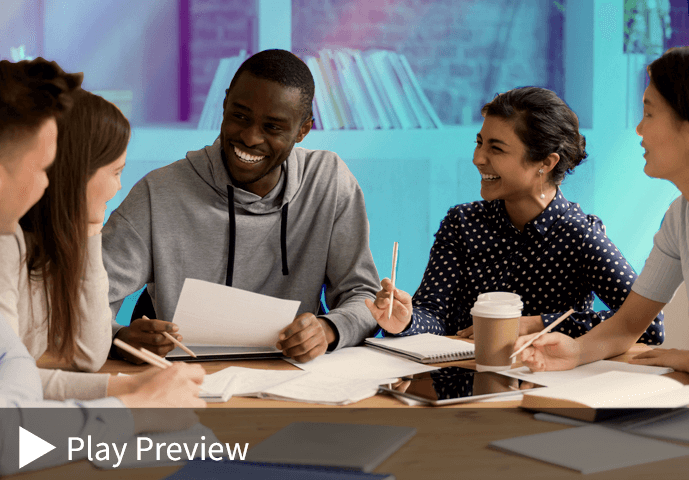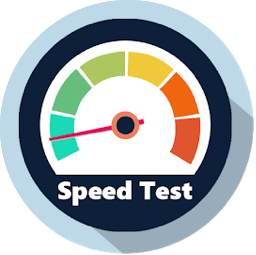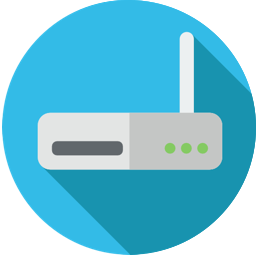
This course explores:
- How small talk and conversations work & what makes them difficult
- The roles of executive function, social awareness & play in supporting meaningful social connection
- Practical strategies, activities, visual supports & teaching tools for building conversation for ages four through adult
3.5 hours of training and CE credit available for select professionals. For any special accommodations or assistance with resources email us.
Browse additional conversation & social connection resources related this online training course.
Small Talk & Conversations
Strategies to Demystify Conversational Complexities
Replay access through November 30, 2023
Detailed Description
Who should attend
A simple Internet search of “how to create small talk and have conversations” reveals everything from self-help books to lists of tips to instructional videos. Learning to have a dazzling conversation with a stranger seems to be just one click away.
The reality is social language can be complicated. It can be hard to know how to get started and what to say. Alternatively, having a lot to say does not always translate into developing a meaningful connection. It’s also why we often replay past conversations in our minds and at times, worry about interactions to come.
In this course, we will discuss the complexities of small talk and conversations and break them down into their component parts to build strategies that support social connection.
We’ll start by exploring this uniquely human form of social cognition. Why do we have conversations? What makes them difficult? Virtually all face-to-face communication involves a multi-step, constantly shifting process involving non-verbal body cues, perspective taking, and language production. Together, we will learn how conversation requires shared imagination and executive function to move toward a collective goal of connection. Conversation relies on an awareness of where we are, who is there, and what is happening. It requires we consider ourselves and others and is a dynamic process that involves mental flexibility and problem solving. We’ll introduce conceptual frameworks such as the Social Thinking Social Competency Model and the Four Steps of Communication to guide our understanding.
After deepening our understanding of conversation, we then move from concept to practice.
Small talk and conversations are dynamic, and we cannot create scripts for how they will unfold. We can, however, increase our awareness and organize our thinking before we start and then build and practice strategies to begin and keep the connection going.
We’ll introduce developmentally based strategies and engaging activities to support social learners (ages four to adult) in moving toward improvement in their own social goals.
In this online training, we’ll share information regarding:
- The complexity of conversation and why it can be so difficult
- Before the words: the thinking behind the conversing
- Narrative language and its role in supporting our connections with others
- How play forms the basis of conversation through shared imagination
- Collective goals and conversational roles
- Why we participate in small talk when it can seem so “frivolous”
- Tools, not rules for conversation
- Poof, it’s gone! Using manipulatives and visual supports to make language stand still
- Me file + People file = We file. Finding overlap between our own and others' interests
- Ask a Question, Add a Thought! Framework
- Using improvisation as a strategy for building conversation
- Interruptions are expected and other hidden expectations
- Awkward silence... now what?!
- How we can talk about anything from tree moss to dental floss
Who Should Attend
The Social Thinking Methodology is used by a wide variety of professionals, including speech-language pathologists, special and general education teachers, social workers, counselors, clinical and school psychologists, occupational therapists, behavior specialists, and school administrators, to name a few. It’s also used by family members and caregivers across settings.
Learning Objectives and Agenda
Objectives
Participants will be able to:
- Explain why social attention, the first step of the Social Competency Model, is critical to conversation.
- Explain how to create a “We File” as a strategy to support connection.
- Define one strategy to help social learners increase flexibility and problem solving in conversations.
Agenda
1 hour and 30 minutes
- The complexity of conversation and why it can be so difficult
- Social Competency Model and the 4 Steps of Communication: Conceptual frameworks to help us understand conversation
- Before the words: the thinking behind the conversing. Me Files and social observation strategies
- Narrative language and its role in supporting our connections with others
- Using manipulatives and visual supports to make language stand still
- Collective goals and conversational roles
1 hour and 30 minutes
- Tools, not rules for conversation
- Me file + People file = We file. Finding overlap between our own and others' interests
- Ask a Question, Add a Thought! Framework
- How play forms the basis of conversation through shared imagination. Activities across the ages
- Using improvisation as a strategy for building conversation
- How we can talk about anything from tree moss to dental floss
30-minute Previously Recorded Q&A Session with the speakers
Continuing Education Credit
3.5 hours toward CE credit, if applicable
Click here to see if you can receive CE credit by Profession and by State
We are proud to provide access to continuing education credit for:
- Speech-Language Pathologists
- Educators
- ...and others!
Technical requirements to participate in online training
Streaming compatible browser

The best browser for streaming is Google Chrome. If you are unable to use Chrome, please make sure the version of your browser is the latest and greatest.
Download ChromeHigh-speed internet connection

Make sure you are accessing the online course on a device that is connected to high speed internet—that means your download speed is at least 25Mbps.
Run Internet Speed TestOpen firewall ports

If you are accessing the online course from your school or organization, ask your network administrator if there are any firewall ports that need to be opened.
Learn More








